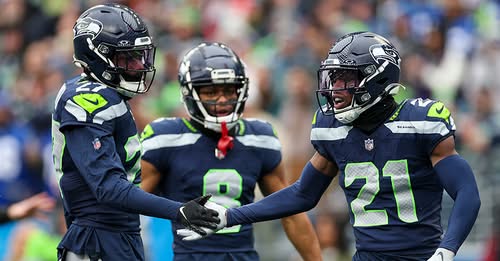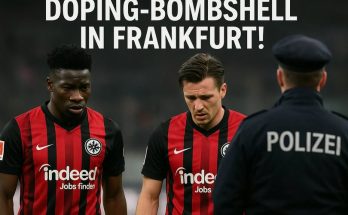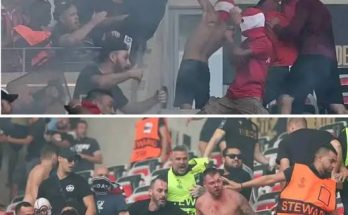Sports Illustrated’s Albert Breer has earned a reputation as one of the more level-headed, thoughtful, and well-sourced analysts in football media. Unlike hot-take artists or pundits who fall victim to overreactions based on legacy teams or big-market narratives, Breer digs into coaching shifts, depth charts, emerging schemes, and—perhaps most importantly—the development arc of young talent. When Breer says something is worth watching, especially in the NFL landscape crowded with parity, it’s often because he’s seeing the hints of a bigger evolution that casual fans and even other media figures may overlook. That’s why his recent comments about the Seattle Seahawks have turned a few heads, particularly because most national observers aren’t putting the Seahawks anywhere near the top of their preseason power rankings.
To be clear, the Seahawks aren’t entering the 2025 NFL season with the kind of fanfare typically reserved for Super Bowl contenders. They’re not sitting in the same media oxygen as the Chiefs, 49ers, or Ravens. They don’t have the same quarterback headlines as the Bengals or Bills. But Seattle has something else—and Breer sees it clearly: they have an incredible nucleus of young, developing talent that could morph this team into a legitimate force. The question Breer poses is an honest one. Can those promising players elevate to another level, or will they plateau under new head coach Mike Macdonald?
The Seahawks are in the early stages of a transformation, not a rebuild. That distinction matters. A rebuild implies total disassembly, a stripping of core parts, and a slow, sometimes painful march back to competitiveness. What’s happening in Seattle doesn’t quite fit that mold. Rather, the Seahawks are reloading—with foundational pieces in place. Last season might not have resulted in a playoff win, but it did showcase the raw, untapped potential throughout their depth chart. Several players stood out as potential breakout stars, and in many cases, they were still adjusting to the NFL’s speed and complexity.
At the heart of Breer’s optimism is the development arc of their young players from the last two drafts. General manager John Schneider and former coach Pete Carroll worked together in building this roster, and while Carroll is gone, his legacy is felt in the youth movement. The 2022 and 2023 drafts, in particular, were fruitful. Charles Cross and Abe Lucas solidified the offensive line as rookies. Kenneth Walker III showed explosive potential out of the backfield. Tariq Woolen, a fifth-round steal, turned into a Pro Bowl cornerback. Devon Witherspoon, the high first-rounder in 2023, was one of the most dynamic defensive backs in the league last season. Add to that a growing contribution from Jaxon Smith-Njigba and Boye Mafe, and it’s not hard to see what Breer is talking about.
The defense, now under the leadership of Macdonald, could very well be the team’s X-factor. Coming from the Baltimore Ravens system, Macdonald brings a scheme that is complex but also capable of unlocking player versatility. In Baltimore, he found ways to maximize hybrid defenders—players like Kyle Hamilton, who could impact the game from multiple alignments. It’s easy to imagine a player like Witherspoon thriving in a similar mold. Macdonald also has a reputation for maximizing the production of pass-rushers who don’t necessarily enter the league as elite-level talents. That bodes well for Mafe, Derick Hall, and even Uchenna Nwosu returning from injury. The defensive line isn’t packed with household names, but it could quickly develop into one of the NFL’s most difficult groups to block if Macdonald’s history is any indication.
Offensively, the team may not have a superstar quarterback, but Geno Smith has proven himself as a capable and efficient starter. He might not be the long-term answer, but he has grown into a reliable leader who takes care of the football and gives his playmakers opportunities to shine. DK Metcalf remains one of the league’s most physically imposing wideouts, and Tyler Lockett continues to be a model of consistency. But it’s Smith-Njigba, the second-year receiver out of Ohio State, who may hold the key to the offense’s evolution. He has the traits to be a volume target, a third-down machine, and a slot nightmare. If he takes that next step, the Seahawks’ passing game will force defenses to play honestly, opening more space for Walker and rookie running back Zach Charbonnet to punish teams on the ground.
Breer’s take reflects more than just talent recognition. It reflects a deeper understanding of how NFL teams grow from potential to performance. It’s not just about who you draft—it’s about when those players start to hit their ceilings. Sometimes, teams hit that window at the right time, and everything aligns: player development, coaching system, injury luck, and opponent regression. The Seahawks might be on the verge of that window. While they still play in a tough NFC West, the dynamics are shifting. The Rams are navigating life after their Super Bowl run with a lot of roster turnover. The Cardinals remain a few years away from real contention. The 49ers are the division’s alpha dog, but they’ve been living on the edge of the salary cap cliff for a while now. If injuries or regression hit them hard, Seattle could be next in line.
There’s also something to be said about culture—something Carroll emphasized for over a decade in Seattle. That foundation doesn’t disappear overnight. The Seahawks are a team built on competition, self-belief, and physicality. Macdonald won’t look to undo that but rather modernize it. He brings a fresh voice without tearing down the house. That’s critical in maintaining locker room buy-in during transitional periods. Leadership still exists within the roster. Bobby Wagner may be gone, but Quandre Diggs, Lockett, and others are still influential voices. With the right internal chemistry, the leap Breer is hinting at becomes much more plausible.
Of course, no offseason optimism is complete without addressing the trenches. Seattle’s offensive line is still growing, and how that group performs will determine how far the team can really go. Cross and Lucas have to remain healthy and take another step in pass protection. Center remains a position of concern, though the team addressed it in the draft. Young linemen often need time to mesh, and continuity is key. Defensively, the front seven is promising but has to prove it can stop the run consistently, especially in cold-weather, playoff-type environments. These are not small questions. These are the real friction points between promise and performance.
Breer isn’t predicting a Super Bowl appearance or even a deep playoff run. But he’s placing the Seahawks in a tier of teams that could surprise many—one or two developmental leaps away from being taken seriously in January. These are the teams that analysts love to circle in August because if things break right, they look like geniuses by December. Seattle fits that mold almost perfectly. They have just enough experience, just enough youth, and a new coaching staff capable of shaking up tendencies without forcing an identity crisis.
If Smith-Njigba becomes a WR1-level producer, if Witherspoon starts impacting games like a young Tyrann Mathieu, if Kenneth Walker III stays healthy and becomes a consistent 100-yard threat, and if the young tackles become top-tier bookends, then the Seahawks will not only outperform national expectations—they’ll be a real problem for any team with playoff aspirations. And those are not wild “ifs” either. Each one of those developmental steps is grounded in what we’ve already seen from those players in spurts. It’s a matter of consistency, not mystery.
Breer’s comment, “Now the question is, can some of those guys elevate to another level?” isn’t a throwaway line. It’s the lens through which the entire Seahawks season will be judged. They aren’t just playing to compete in 2025—they’re playing to find out who they are for the rest of the decade. Teams that answer those questions early—like the Eagles with Jalen Hurts or the Lions with Amon-Ra St. Brown and Penei Sewell—build faster than anyone expects. Teams that stumble in development cycles—like the Jets or Panthers—often find themselves stuck in perpetual transition.
Seattle doesn’t want to be stuck. With a new coach, a locker room full of rising stars, and a schedule that includes enough soft spots to stack early wins, this is a team that could ride momentum as well as any. And if they do, Breer will be among the few national voices who can say, “I told you so,” not because he took a gamble but because he did what smart observers do: look past last year’s record and into the future that’s already forming. For the Seahawks, that future could be a lot closer than most people think.



